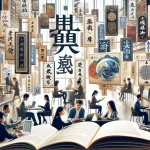The translation industry is currently undergoing significant changes, driven by rapid advancements in technology. Machine translation (MT) and large language models (LLMs) are transforming how we approach translation, making it faster and more accessible. These innovations are particularly beneficial for languages with Roman scripts, where the technology has shown remarkable progress in terms of accuracy and efficiency.
However, when it comes to translating Asian languages with non-Roman scripts, the situation is more complex. Languages such as Chinese, Thai, Japanese, Khmer, Lao, Korean, and Burmese present unique challenges that current technologies struggle to address effectively. This article delves into the complexities of translating these languages and why special care is essential to ensure accuracy and cultural relevance.
The Unique Challenges of Asian Language Translation
Complexity Beyond Roman Characters
Asian languages present unique challenges that are often overlooked by MT and LLM technologies primarily developed for Roman characters. For instance, Thai script lacks spaces between words, making it difficult for translation platforms like Trados to produce accurate word counts. This absence of spacing complicates segmentation, a critical step in the translation process.
Similarly, languages like Chinese and Japanese use characters that convey complex meanings. Each character can represent an entire word or phrase, requiring a deep understanding of context to translate accurately. This is a stark contrast to Roman character-based languages, where individual letters combine to form words, making segmentation and translation more straightforward.
Additionally, Khmer and Lao scripts also have their unique characteristics. Khmer script, for example, includes subscript consonants and a variety of diacritics that change the pronunciation of the base consonants. Lao script is phonetic but lacks spaces between words, similar to Thai, adding another layer of complexity for automated translation systems.
The Importance of Human Formatting
Translating Asian languages is not just about converting text from one language to another. It involves meticulous formatting to ensure the final output is accurate and visually correct. For example, Thai uses tone marks and vowels that are mini characters positioned above, below, or beside consonants. These can easily be corrupted if the correct font, language setting, and encoding format are not used.
Japanese and Korean also present unique formatting challenges. Japanese employs three scripts—Kanji, Hiragana, and Katakana—each with its own usage rules. Kanji characters are logographic, each carrying a distinct meaning, while Hiragana and Katakana are syllabic scripts used for grammatical purposes and foreign words, respectively. Proper usage and placement of these scripts are essential for maintaining the integrity of the translated text.
Korean uses Hangul, a script where characters are grouped into syllabic blocks, requiring careful attention to spacing and alignment. Each block typically represents a syllable and contains multiple characters, making it crucial to get the formatting right to ensure readability.
The Four-Step Translation Process
At Asia Translation, we understand the complexities of translating Asian languages and the limitations of current technologies. To ensure the highest quality, we follow a meticulous four-step process:
- Translation
- Native-speaking translators with expertise in the target language undertake the initial translation. Their deep understanding of cultural nuances ensures the translation is contextually appropriate. This step involves careful selection of words and phrases to convey the intended meaning accurately.
- Editing
- The translated text undergoes a thorough editing process. Editors refine the text for clarity, style, and coherence, ensuring it aligns with the original message. This stage involves checking for consistency, grammatical correctness, and appropriate tone.
- Review
- A secondary review by another linguist ensures accuracy and consistency. This step helps identify any overlooked errors and verifies the overall quality of the translation. The reviewer cross-checks the translation with the source text to ensure no meaning is lost or altered.
- Quality Assurance (QA)
- The final step involves rigorous quality assurance. Our QA team uses advanced tools and technologies such as Translation Memories, Style Guides, and Computer-Assisted Translation (CAT) tools to ensure the translation meets our stringent standards. This step also includes formatting checks to ensure the text is visually correct and ready for publication.
Navigating the Future of Translation
The translation industry must continue to adapt as technology evolves. While MT and LLMs have made significant strides, the intricacies of Asian languages require a hybrid approach that combines technological advancements with human expertise. This blend ensures that translations are not only accurate but also culturally resonant and visually correct.
Machine translation tools are improving, but they still struggle with the complexities of non-Roman scripts. For instance, many MT systems have difficulty handling the contextual nuances of Asian languages. A single character in Chinese or Japanese can have multiple meanings depending on the context, and MT systems often fail to capture these subtleties.
Moreover, Asian languages often require cultural localization beyond mere linguistic translation. Cultural references, idioms, and local expressions must be adapted to resonate with the target audience. This level of cultural adaptation is something that human translators excel at, ensuring that the final translation is not only accurate but also culturally relevant.
At Asia Translation, we pride ourselves on delivering high-quality translations that respect the complexity of Asian languages. Our commitment to excellence and attention to detail make us the preferred choice for businesses seeking reliable and culturally attuned translation services.
The translation of Asian languages involves navigating unique challenges that go beyond mere text conversion. Special care is needed to address the complexities of non-Roman scripts and ensure the final output is accurate and culturally relevant. By combining advanced technologies with human expertise, Asia Translation provides comprehensive translation solutions that meet the highest standards of quality and precision.
Are you looking for expert translation services for your next project? Discover why leading businesses trust Asia Translation for their translation and localization needs. Contact us today for a free quote.



